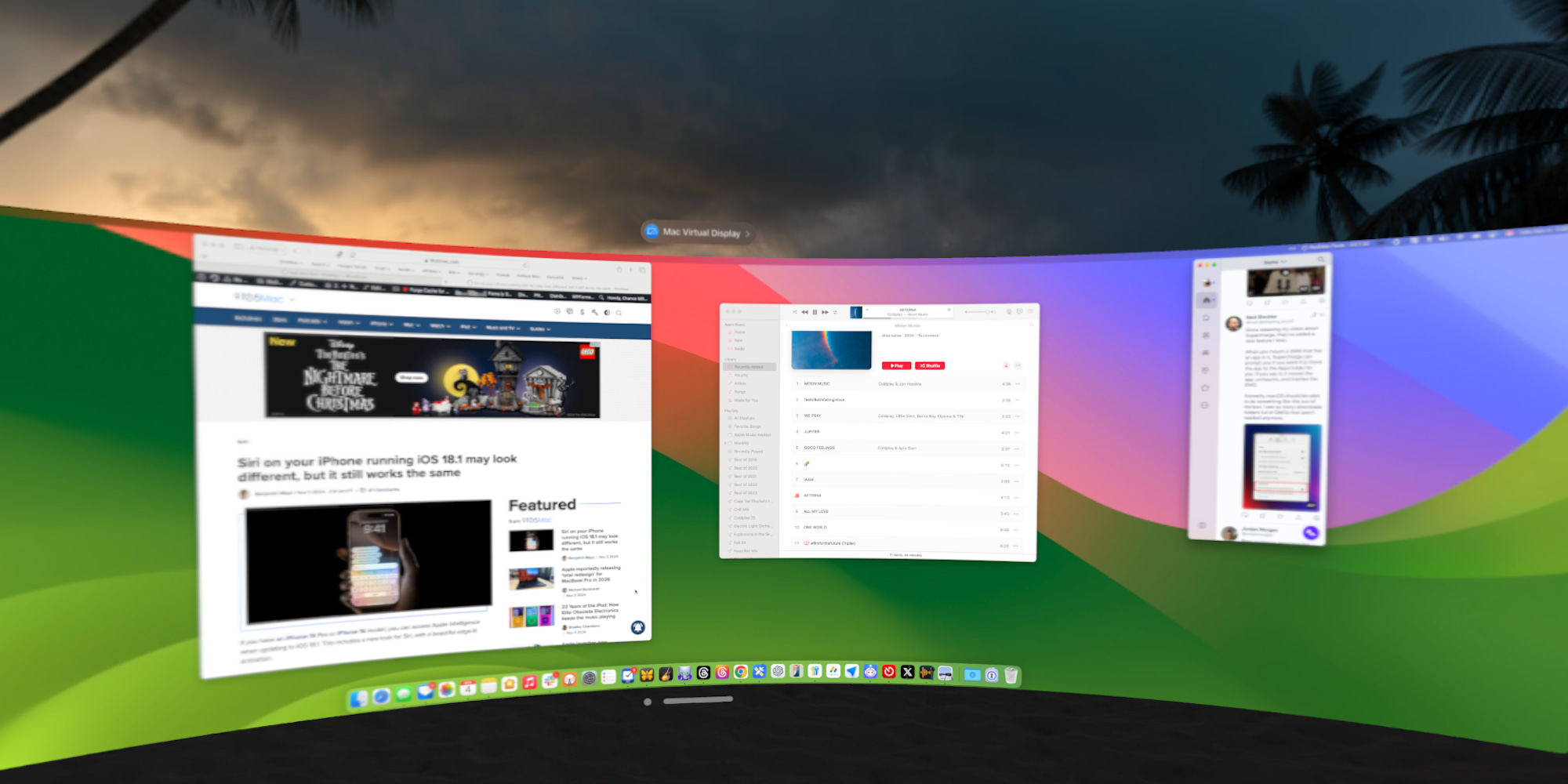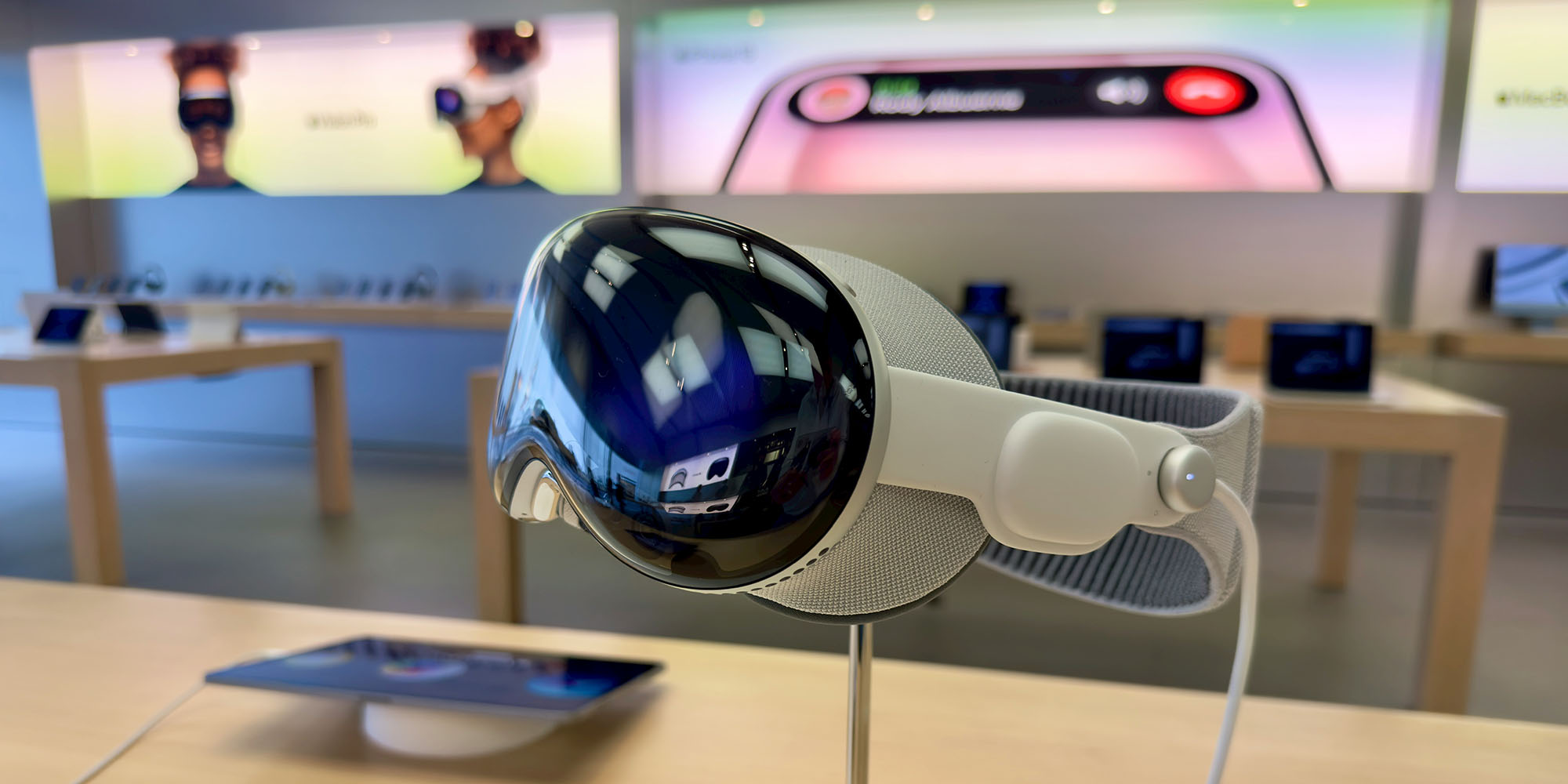The Vision Pro is nearing its first anniversary, and Apple’s upcoming software update promises major enhancements that could transform user interaction. The Mac Virtual Display, one of the standout features of the Vision Pro, will see three significant improvements in visionOS 2.2, greatly advancing spatial computing capabilities.
Wide and Ultrawide Display Modes
Since its launch, the Mac Virtual Display has been regarded as one of the Vision Pro’s top features. However, it hasn’t fully utilized the distinct advantages of the Vision Pro until now with visionOS 2.2.
The existing Mac Virtual Display functionality allows users to mirror their Mac’s screen in a spatial visionOS window, but it is confined to a limited rectangular shape. Although the rectangle’s size can be adjusted, the form remains essentially unchanged.

visionOS 2.2 introduces two new display modes—Wide and Ultrawide—that leverage the unique capabilities of spatial computing.
These modes provide a broader canvas for running all your Mac applications. Given that your surrounding space isn’t restricted to the size of a standard MacBook Air or MacBook Pro, it was essential to expand the Mac Virtual Display beyond a simple rectangular format.
With the introduction of these options, users can maximize their virtual display capabilities and enhance their multitasking efficiency while using the Vision Pro.
High-Quality Display Resolution
Another significant enhancement in visionOS 2.2 ensures that the macOS display remains sharp and vibrant, regardless of the chosen display mode.
The update improves the display resolution of the Mac Virtual Display, addressing complaints from users about the previous resolution being insufficient.
With visionOS 2.2, the resolution disparity between content rendered in a native visionOS app and mirrored macOS apps via the Mac Virtual Display has been notably minimized.
Routing Audio to the Right Place

Lastly, visionOS 2.2 rectifies a peculiar issue that has persisted since the Vision Pro’s introduction. Audio for the mirrored Mac was initially routed through the Mac itself instead of through the Vision Pro.
While options like connecting AirPods Pro or other Bluetooth headphones to the Mac provided some workaround solutions, they were not ideal as they created inconsistencies in audio output between Mac Virtual Display and other visionOS apps.
Now, audio from the Mac Virtual Display is channeled through the Vision Pro directly. This means whether you’re using the built-in speakers or AirPods, you’ll enjoy a seamless audio experience across all your spatial computing tasks.
Next-Gen Computing: Wrap-Up
While it would be fantastic if the Mac Virtual Display function didn’t require an actual Mac in the future, the enhanced Mac Virtual Display experience in visionOS 2.2 currently delivers a unique computing experience that is hard to find elsewhere. It embodies the essence of next-gen computing, which is likely the true meaning of ‘spatial computing’.
Have you explored the updated Mac Virtual Display feature in visionOS 2.2? We’d love to hear your thoughts in the comments.
Best Apple Discounts for Cyber Monday
: . More.



